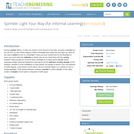
Students design and build flashlights while learning about circuits.
- Subject:
- Education
- Material Type:
- Lesson Plan
- Provider:
- TeachEngineering
- Provider Set:
- TeachEngineering
- Date Added:
- 10/14/2015

Students design and build flashlights while learning about circuits.
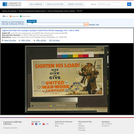
Poster showing a soldier carrying another soldier on his back during winter, they are holding mugs from which steam is rising and they have big smiles on their faces. Also shown are emblems from the following organizations: War Camp Community Service; National Catholic War Council; YWCA; American Library Association; YMCA; Jewish Welfare Board - U.S. Army and Navy; and The Salvation Army.

Students get the inside scoop on a story when they create interview questions and answers for characters in the books they read.
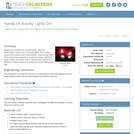
Students are introduced to circuits through a teacher demonstration using a set of Christmas lights. Then students groups build simple circuits using batteries, wires and light bulbs. They examine how electricity is conducted through a light bulb using a battery as a power source. Students also observe the differences between series and parallel circuits by building each type.
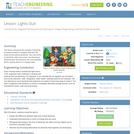
This lesson introduces the concept of electricity by asking students to imagine what their life would be like without electricity. Two main forms of electricity, static and current, are introduced. Students learn that electrons can move between atoms, leaving atoms in a charged state.
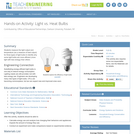
Students measure the light output and temperature (as a measure of heat output) for three types of light bulbs to identify why some light bulbs are more efficient (more light with less energy) than others.
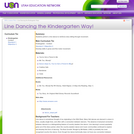
In this lesson students perform a line dance to reinforce story telling through movement.
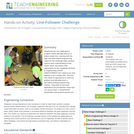
Student groups are challenged to program robots with light sensors to follow a black line. Learning both the logic and skills behind programming robots for this challenge helps students improve their understanding of how robots "think" and widens their appreciation for the complexity involved in programming LEGO® MINDSTORMS® NXT robots to do what appears to be a simple task. They test their ideas for approaches to solve the problem and ultimately learn a (provided) working programming solution. They think of real-world applications for line-follower robots that use sensor input. A PowerPoint® presentation and pre/post quizzes are provided.
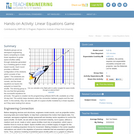
Students groups act as aerospace engineering teams competing to create linear equations to guide space shuttles safely through obstacles generated by a modeling game in level-based rounds. Each round provides a different configuration of the obstacle, which consists of two "gates." The obstacles are presented as asteroids or comets, and the linear equations as inputs into autopilot on board the shuttle. The winning group is the one that first generates the successful equations for all levels. The game is created via the programming software MATLAB, available as a free 30-day trial. The activity helps students make the connection between graphs and the real world. In this activity, they can see the path of a space shuttle modeled by a linear equation, as if they were looking from above.
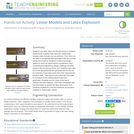
Students use latex tubes and bicycle pumps to conduct experiments to gather data about the relationship between latex strength and air pressure. Then they use this data to extrapolate latex strength to the size of latex tubing that would be needed in modern passenger sedans to serve as hybrid vehicle accelerators, thus answering the engineering design challenge question posed in the first lesson of this unit. Students input data into Excel spreadsheets and generate best fit lines by the selection of two data points from their experimental research data. They discuss the y-intercept and slope as it pertains to the mathematical model they generated. Students use the slope of the line to interpret the data collected. Then they extrapolate with this information to predict the latex dimensions that would be required for a full-size hydraulic accumulator installed in a passenger vehicle.

Students complete an exercise showing logarithmic relationships and examine how to find the linear regression of data that does not seem linear upon initial examination. They relate number of BMD scanners to time.
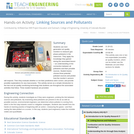
Students use next-generation air quality monitors to measure gas-phase pollutants in the classroom. They apply the knowledge they gained during the associated lesson—an understanding of the connection between air pollutants and their possible sources. Student teams choose three potential pollutant sources and predict how the monitor’s sensors will respond. Then they evaluate whether or not their predictions were correct, and provide possible explanations for any inaccuracies. This activity serves as a simple introduction to the low-cost air quality monitoring technology that students use throughout the associated activities that follow. Three student handouts are provided.

This resource is a video abstract of a research paper created by Research Square on behalf of its authors. It provides a synopsis that's easy to understand, and can be used to introduce the topics it covers to students, researchers, and the general public. The video's transcript is also provided in full, with a portion provided below for preview:
"Hematopoietic stem cell transplantation (HSCT) is used to cure a variety of blood-, immune-, and metabolism-related disorders. However, there are still many serious, even deadly, complications that can arise post-transplantation. Research in adults has suggested that the gut microbiota influences post-transplantation outcomes, but little is known about its role for pediatric patients. To reduce this gap, researchers recently examined the microbial and metabolic profiles of pediatric HSCT patients from a single hospital center. At time of admission, the gut microbial species diversity in HSCT patients was lower than the diversity in healthy controls. This diversity dropped even lower after transplantation, and for most, it did not return to baseline levels. An algorithm identified three community state ‘clusters’ that were characterized by the dominant bacterial groups within them. Cluster 1 was common pre-transplantation, while clusters 2 and 3 were common post-transplantation..."
The rest of the transcript, along with a link to the research itself, is available on the resource itself.
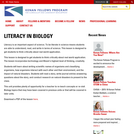
Literacy is an important aspect of science. To be literate in science means students are able to understand, read, and write in terms of science. This lesson is designed to get students to think critically about real world application. The lesson incorporates technology and Blooms highest level of thinking, creativity. Students will learn about writing scientific names of organisms and classifying organisms, how organisms interact with each other and their environment, and the impact of natural disasters.
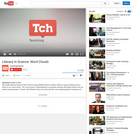
8th Grade Science teacher Peter Hill from King Middle School in Maine shares a quick strategy tool and strategy he refers to as "word cloud". The "word cloud" is generated by a computer program that takes words from an article and generates a "cloud" with different sizes of words with the size emphasizing the frequency of the word. Mr. Hill uses this as a quick pre-reading activity to increase curiosity and engagement and to have students anticipate what the article or essay is about and what the main idea is. Teachers might also consider a twist to this idea and have student groups create their own word cloud after reading a selected text.11
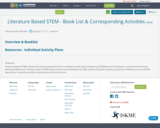
Literature Based STEM - Book List & Corresponding Activities:
Looking for grab-and-go elementary STEM lessons? Looking for a read-aloud to hook an existing STEM lesson? Trying to build a STEM library? Search the spreadsheet by titles, authors, big ideas, themes, and lessons. Whether you are a STEM specialist or a classroom teacher, these lessons will work for you.

Access historic documents related to literature and poetry including selected Walt Whitman notebooks, digitized rare books, and presentations on a variety of literary figures ranging from Anne Bradstreet and Phillis Wheatley to Edgar Allan Poe and Ernest Hemingway.

This series of lessons commemorates the integration of Little Rock Central High School in 1957. One lesson features the biography of Daisy Bates, a leader of the desegregation crisis. Another focuses on the nine African-American youths who risked their lives for equality. The final two lessons examine how school integration affected the Little Rock community.This lesson focuses on questions of justice and the role youth have played in social and political movements. By reading a combination of primary and secondary sources, students will learn how the Little Rock Nine came to play their important role. These teenagers’ participation in school integration stemmed not from the prodding of the parents or activists, but from within themselves.
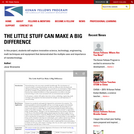
Nanotechnology is the next major scientific breakthrough. The development of nanotechnology is extremely promising, but there are unknown risks associated with utilizing nanotechnology. Nanoparticles occur naturally in our environment. Pollen, viruses, and ash are examples of nanoparticles that affect our environment and our health. Scientists have studied the behavior of these nanoparticles in an effort to develop nanotechnology to solve issues associated with our environment and our health. In this project, students will explore innovative science, technology, engineering, math techniques and equipment that demonstrated the multiple uses and importance of nanotechnology.
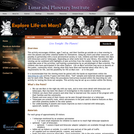
This activity is about viewing the planet Mars (and others) through a telescope. Learners will go outside on a clear evening to view the planets and other celestial bodies for themselves. Using sky charts and other resources, and possibly in partnership with a local astronomical society or club, children and their families view Mars with binoculars and/or telescopes. The children who have participated in the other Explore: Life on Mars? activities may serve as docents at this public, community event, sharing what they have done and learned about what life is, the requirements for life, and the possibility for life on Mars now — or in the past! It is recommended that the viewing event be paired with the hands-on experiment within the Searching for Life activity if space and time allow. It also includes specific tips for effectively engaging girls in STEM. This is activity 8 in Explore: Life on Mars? that was developed specifically for use in libraries.